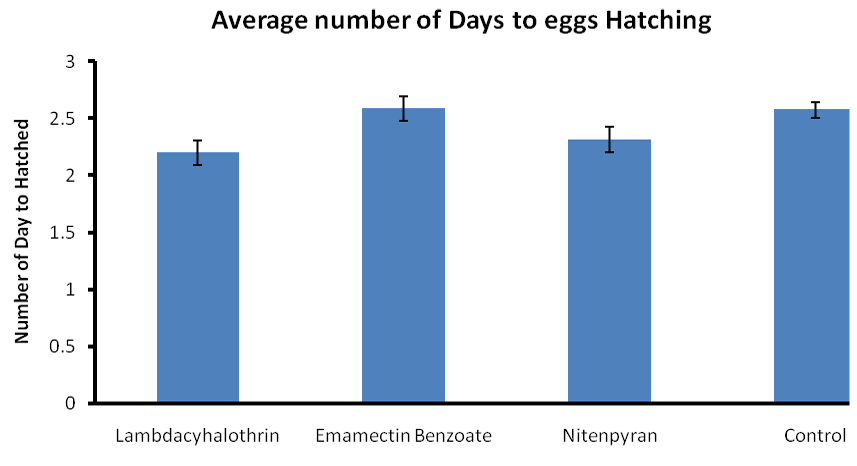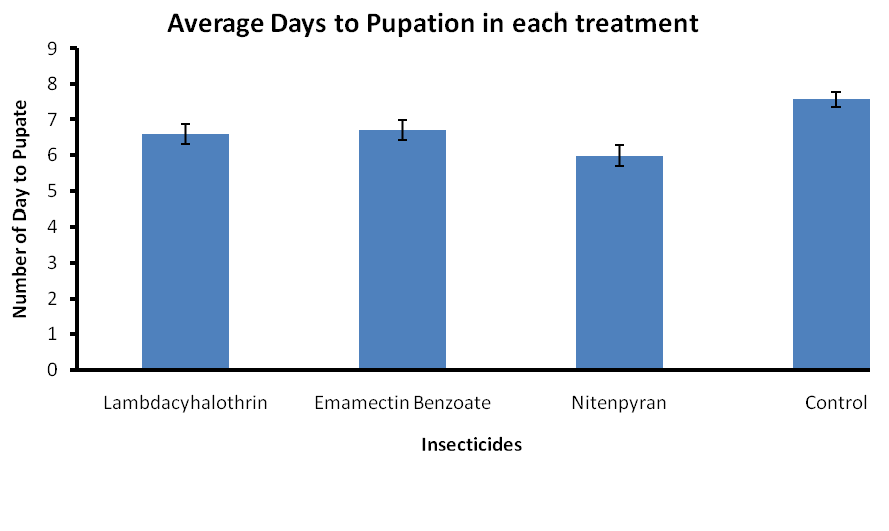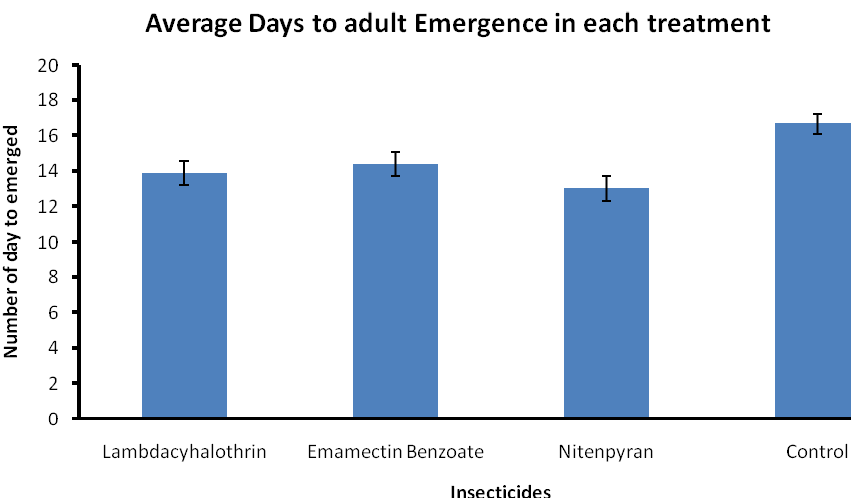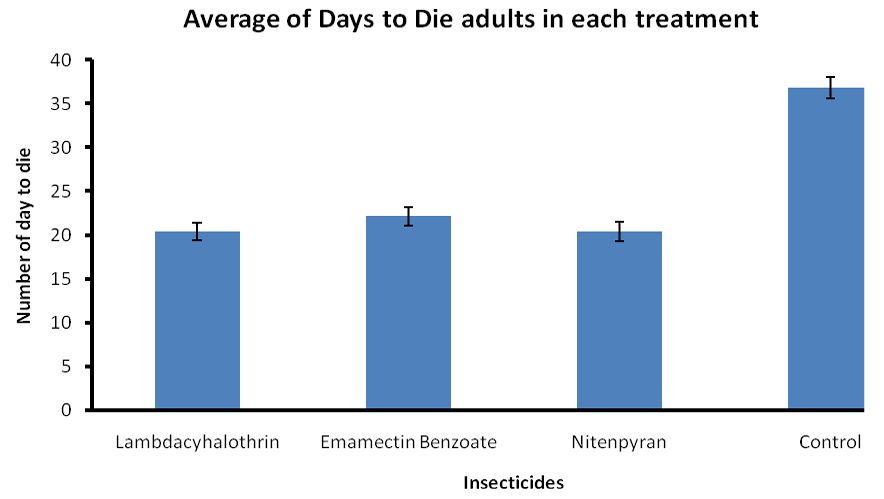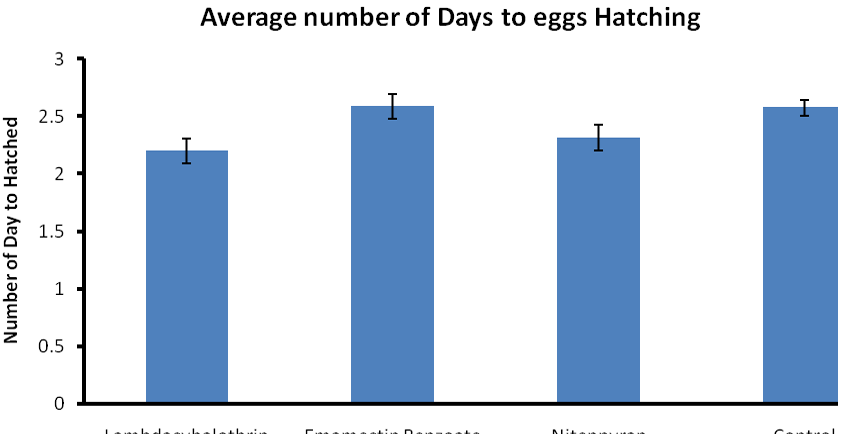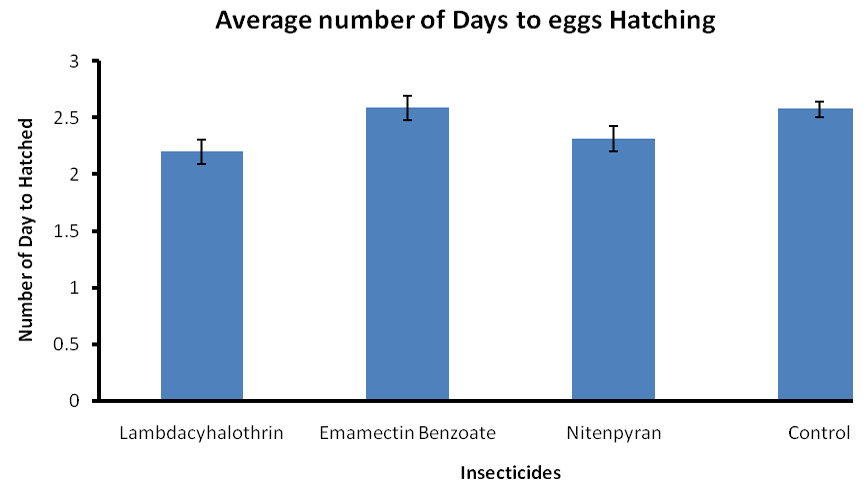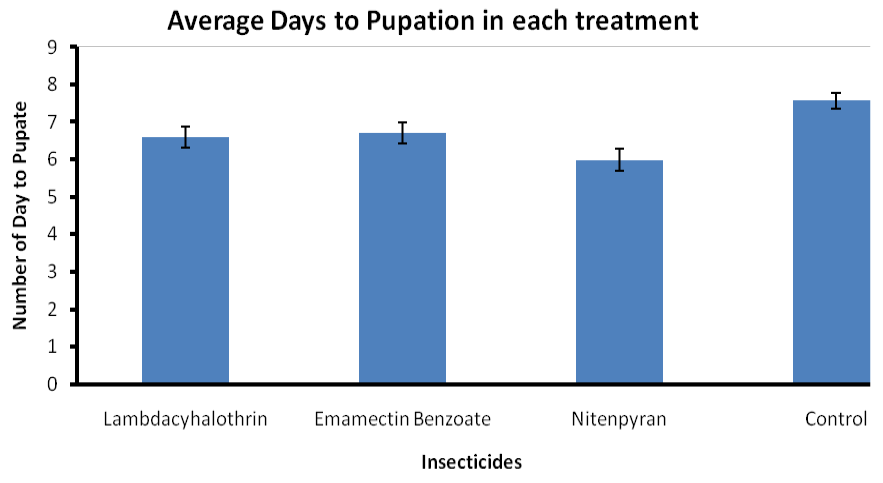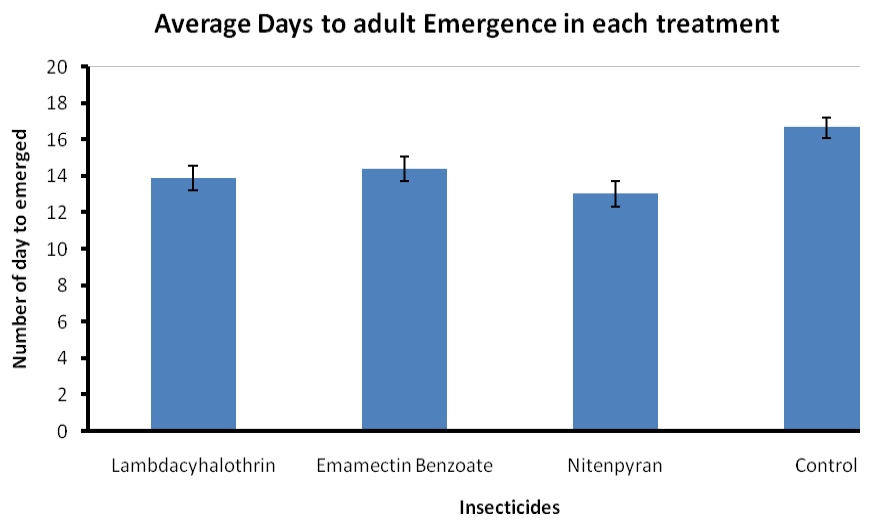Effect of Insecticides on the Longevity of Apis mellifera L. (Hymenoptera: Apidae)
Hafiz Khurram Shurjeel1, Muhammad Anjum Aqueel2, Ejaz Ashraf3*, Asad Ali4 and Arooba Rubab5
Average number of (mean ± SEM) egg presence of Apis mellifera in each insecticide application.
Average number of (mean ± SEM) egg hatching of Apis mellifera in each insecticide application.
Average number of day (mean ± SEM) to egg hatching of Apis mellifera in each insecticide application.
Average number of days (mean ± SEM) to pupation of Apis mellifera from larvae to pupae in each insecticide application.
Average of adult emergence (mean ± SEM) of Apis mellifera in each insecticide application from pupae to adult.
Average number of days (mean ± SEM) to emergence of Apis mellifera from pupae to adult in each insecticide application.
Average number of days (mean ± SEM) to die of adults of Apis mellifera in each insecticide application.





